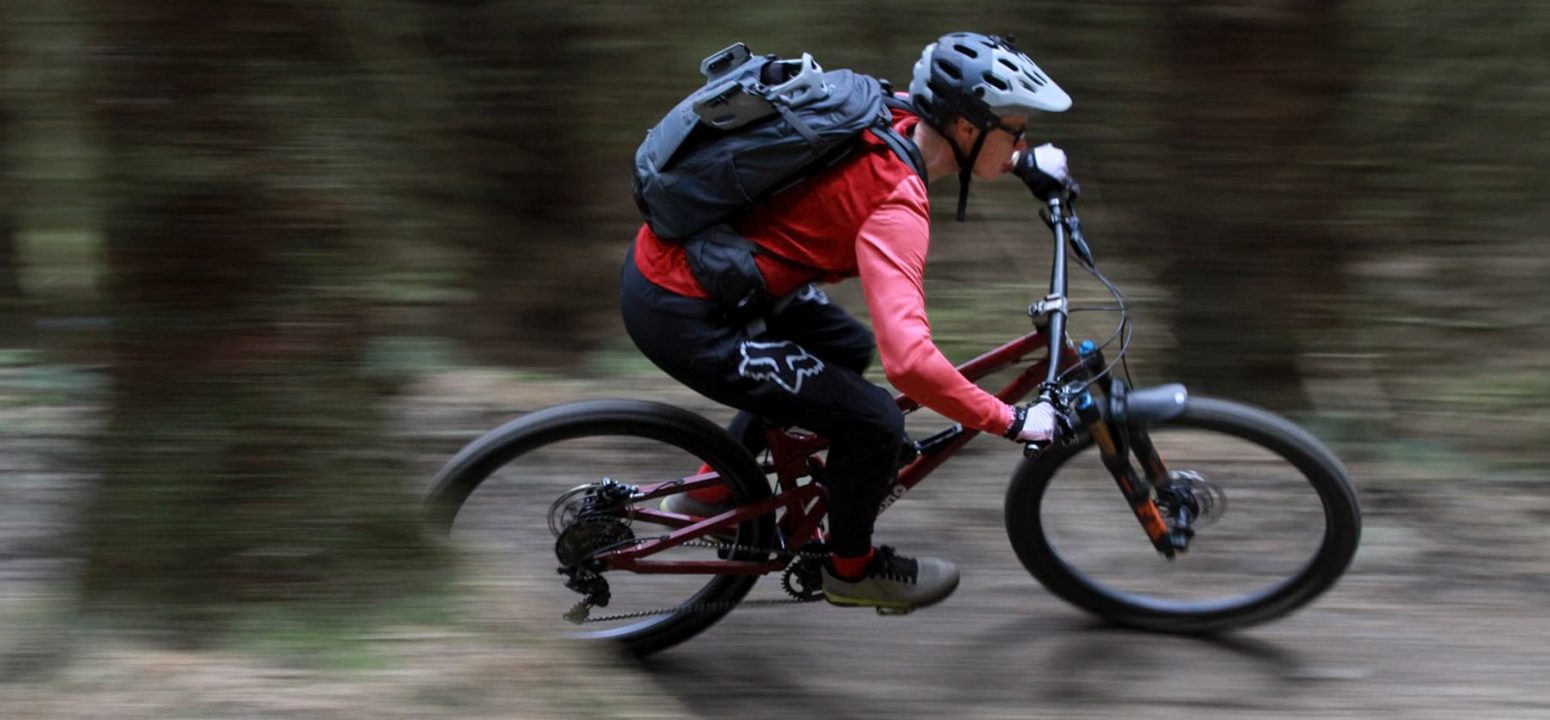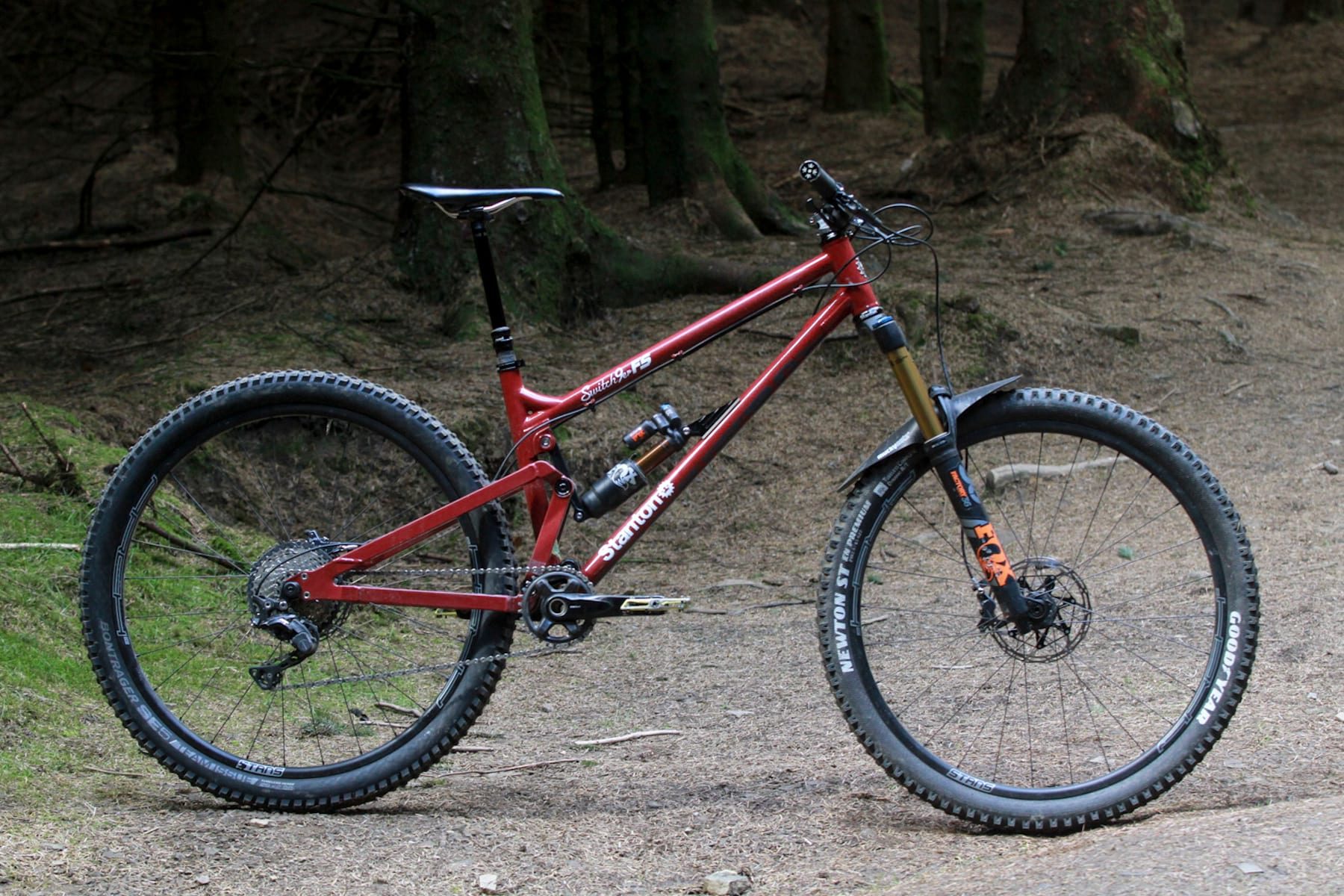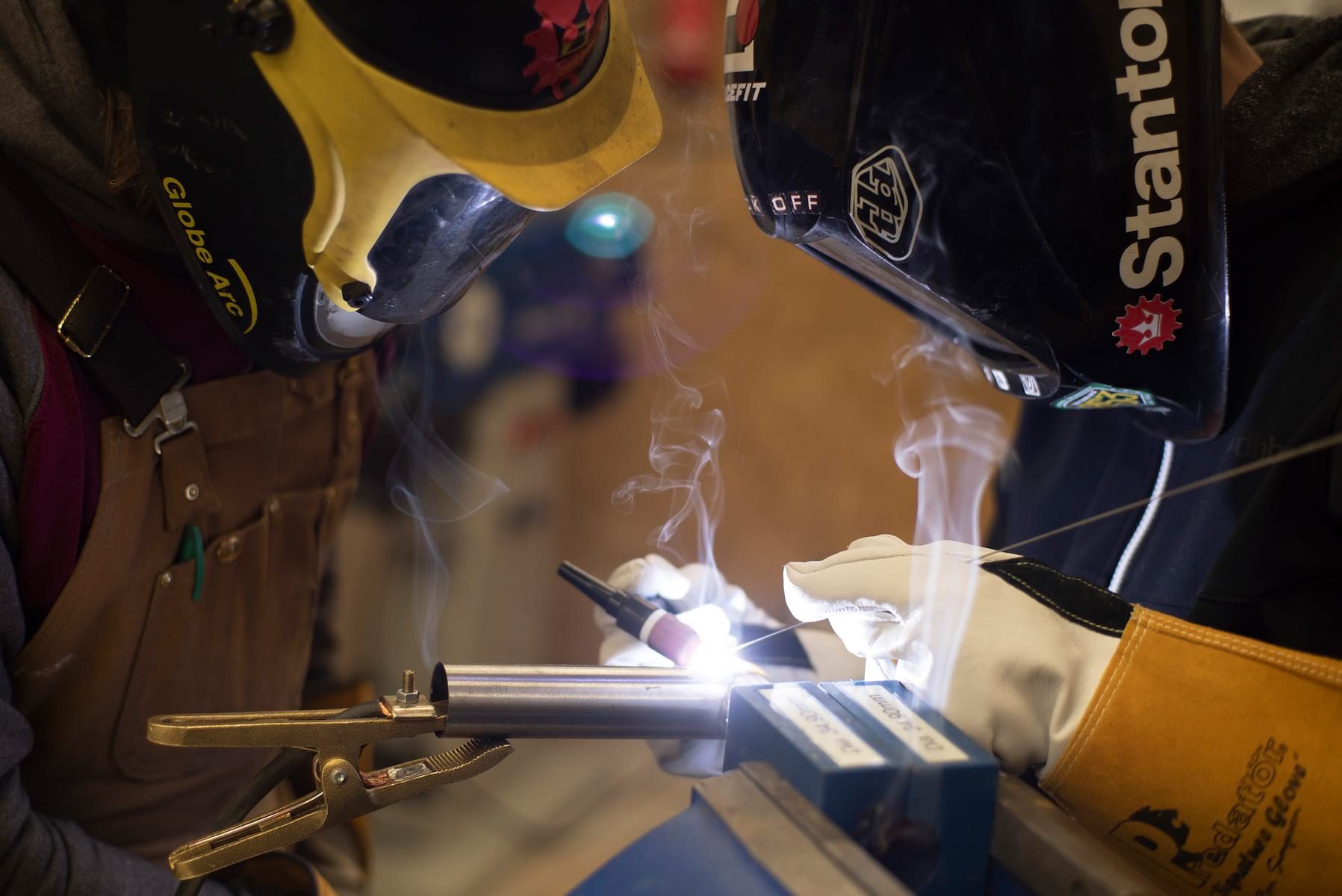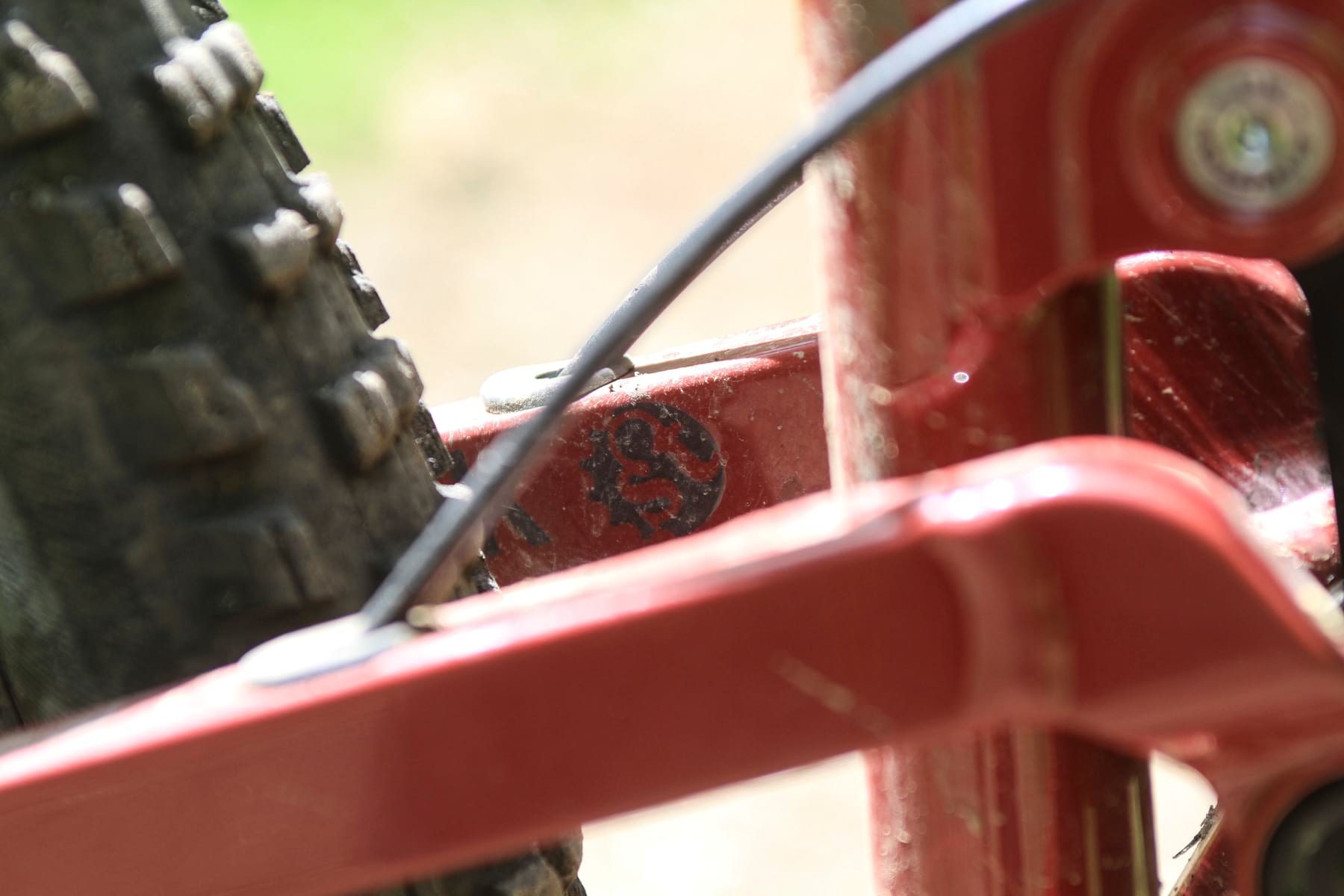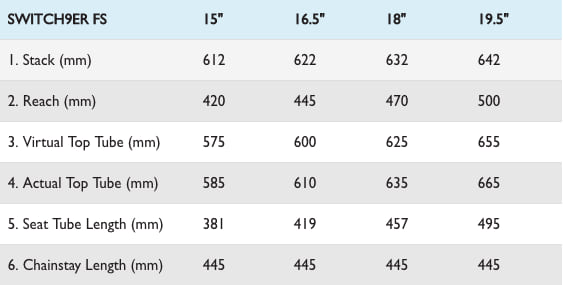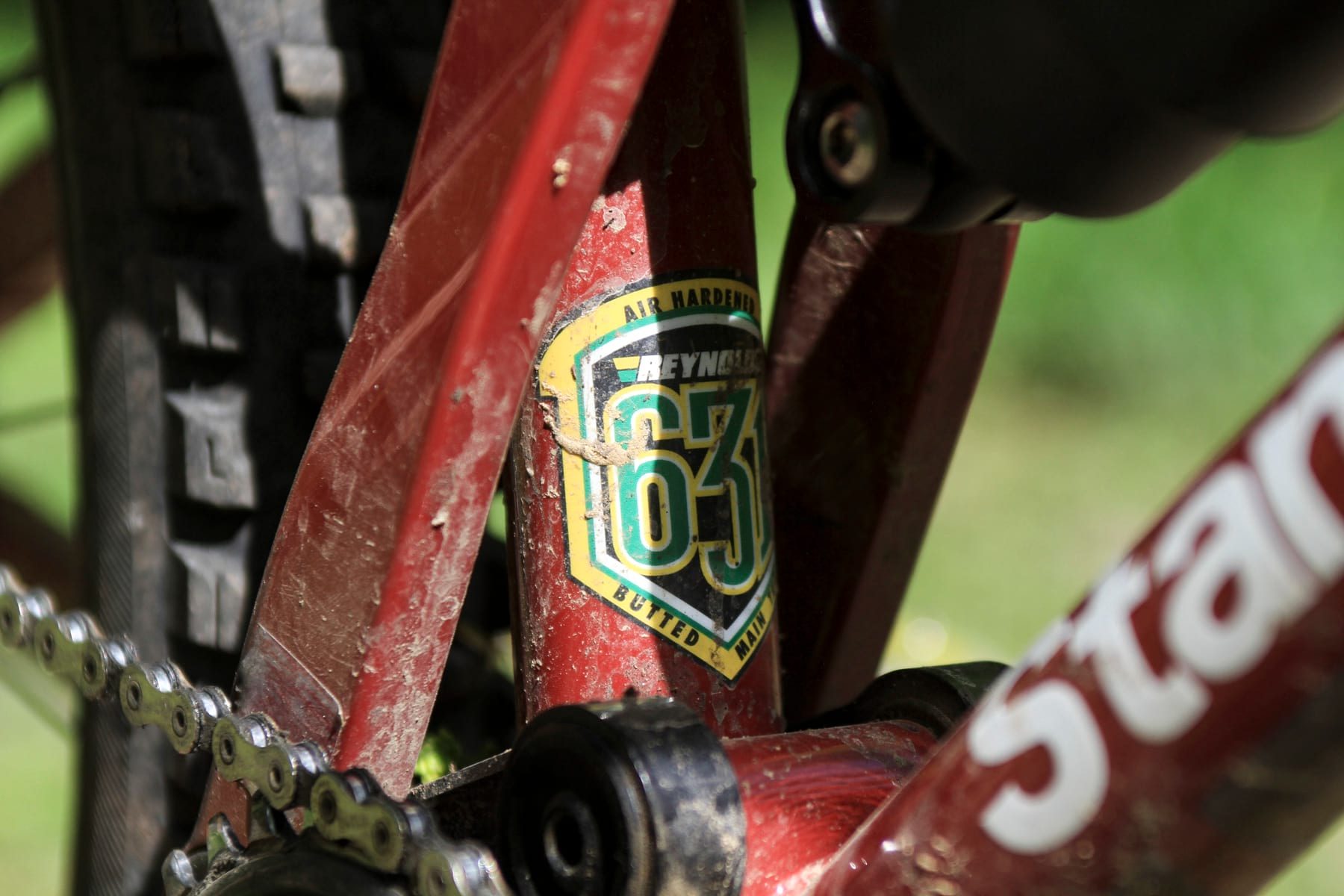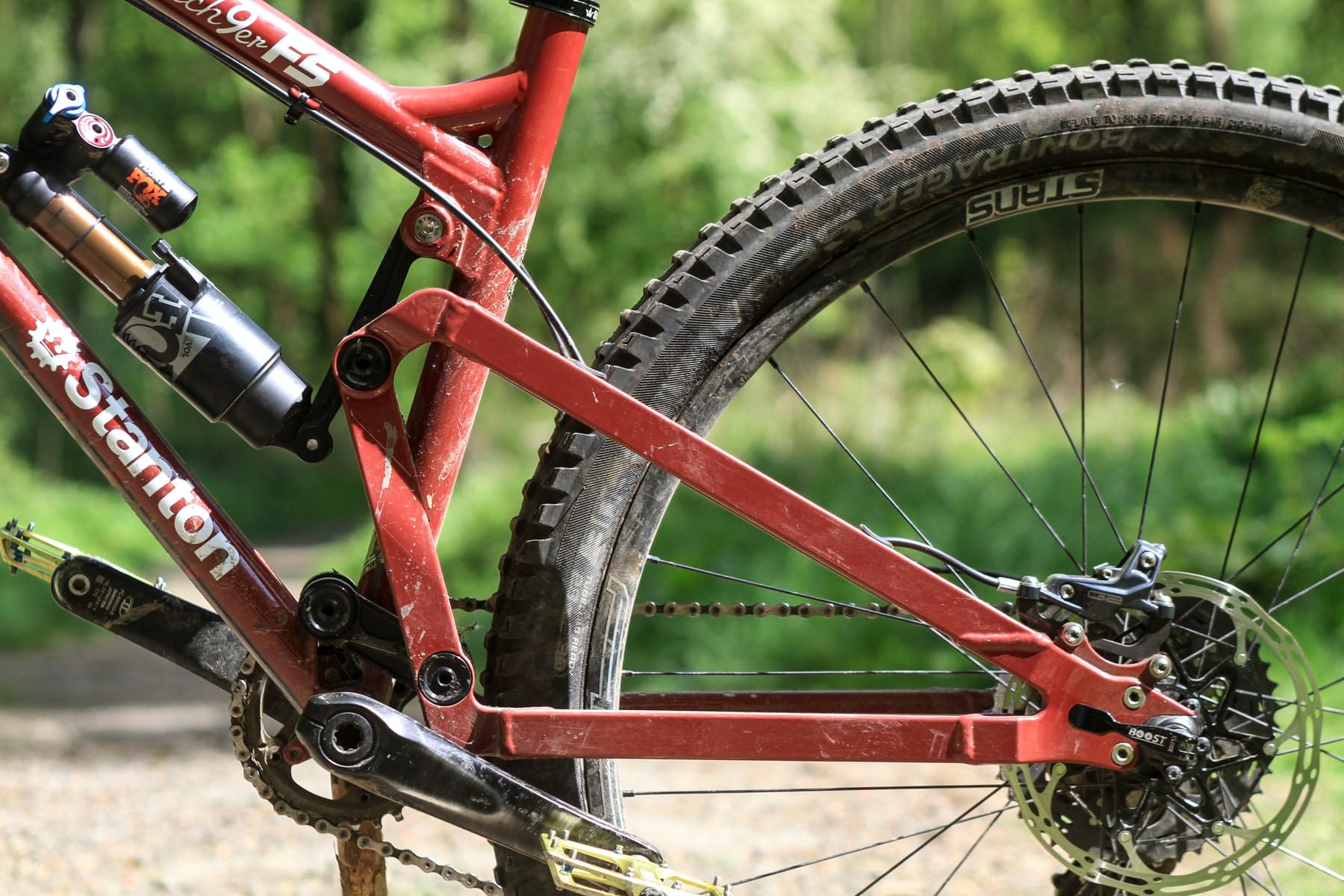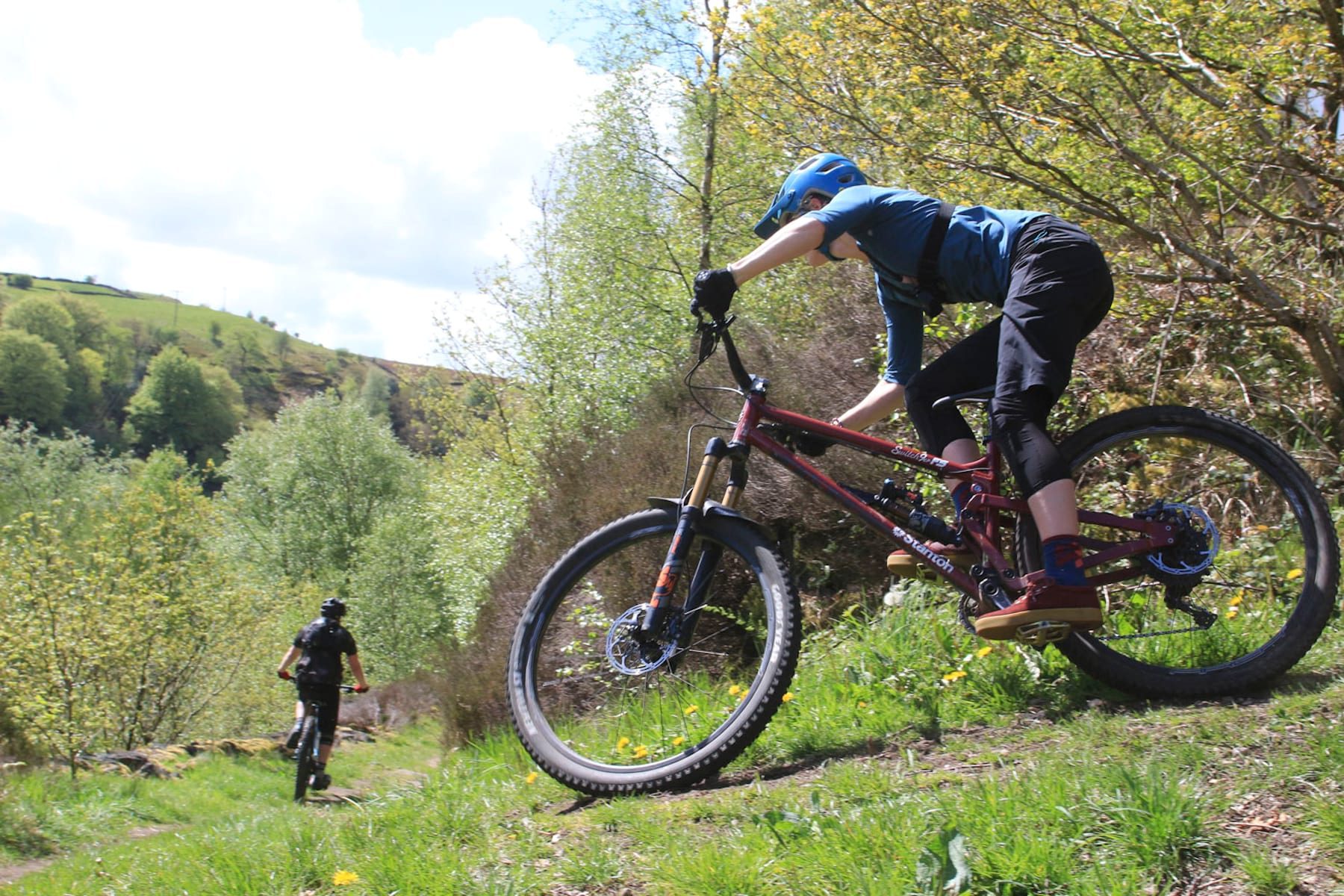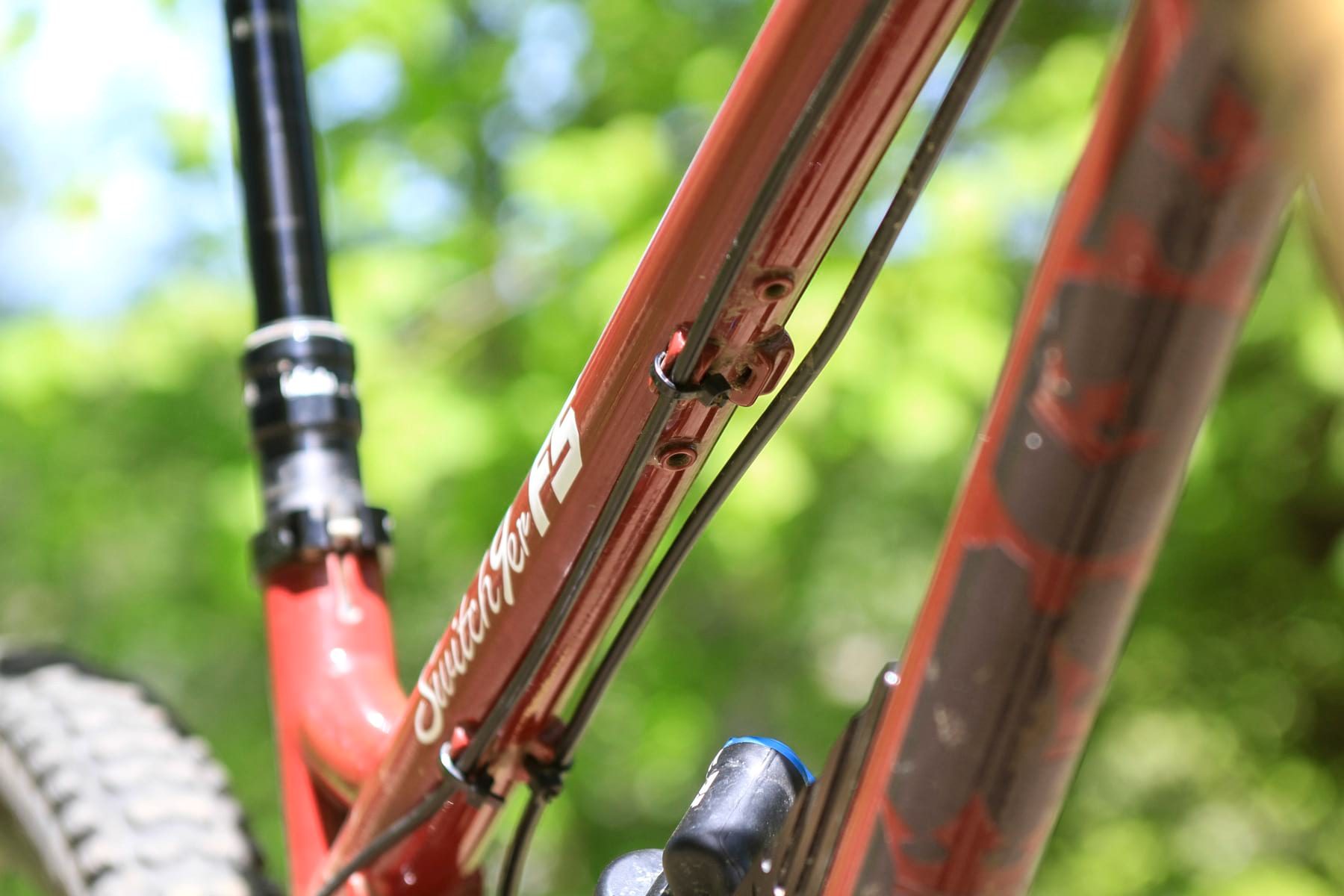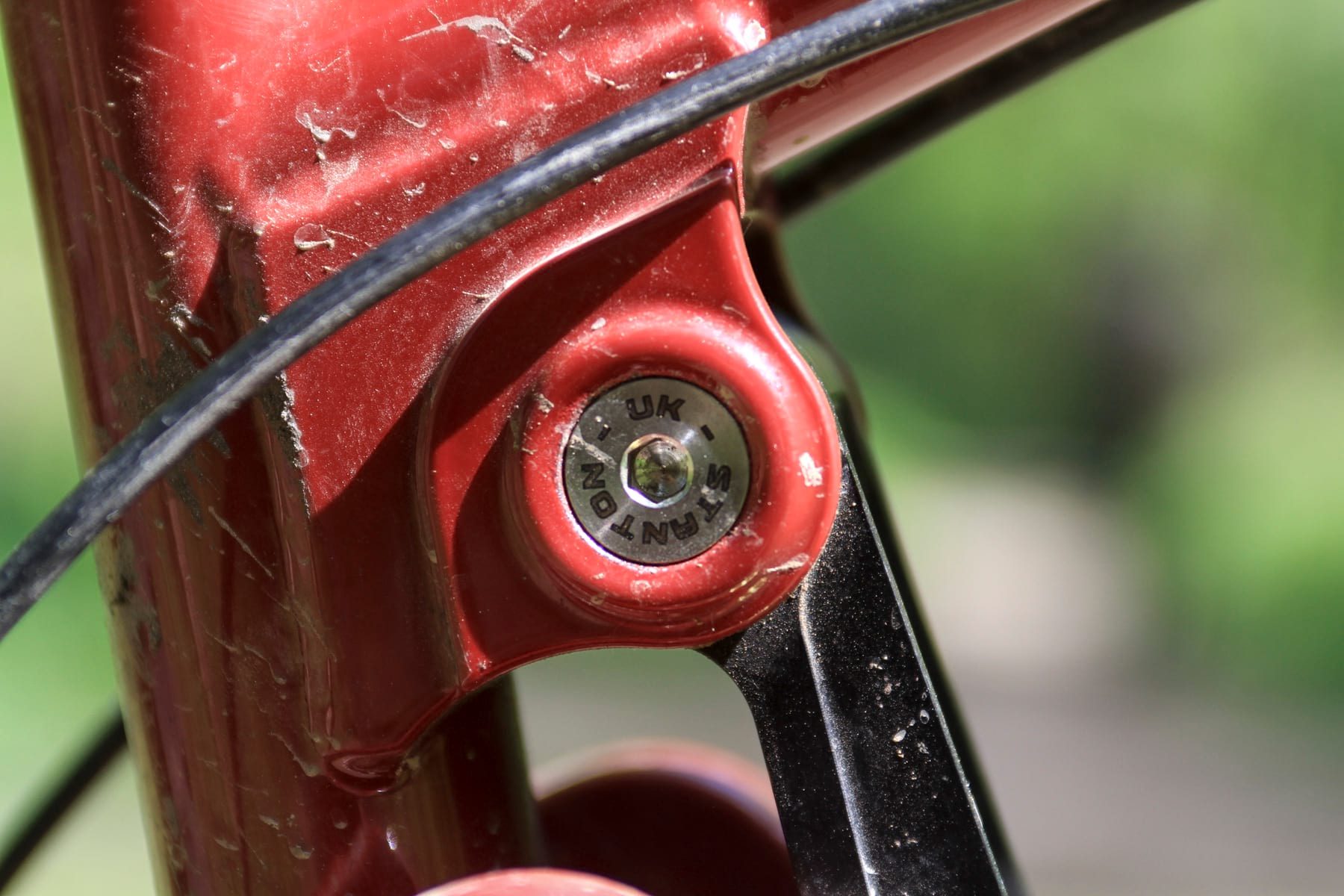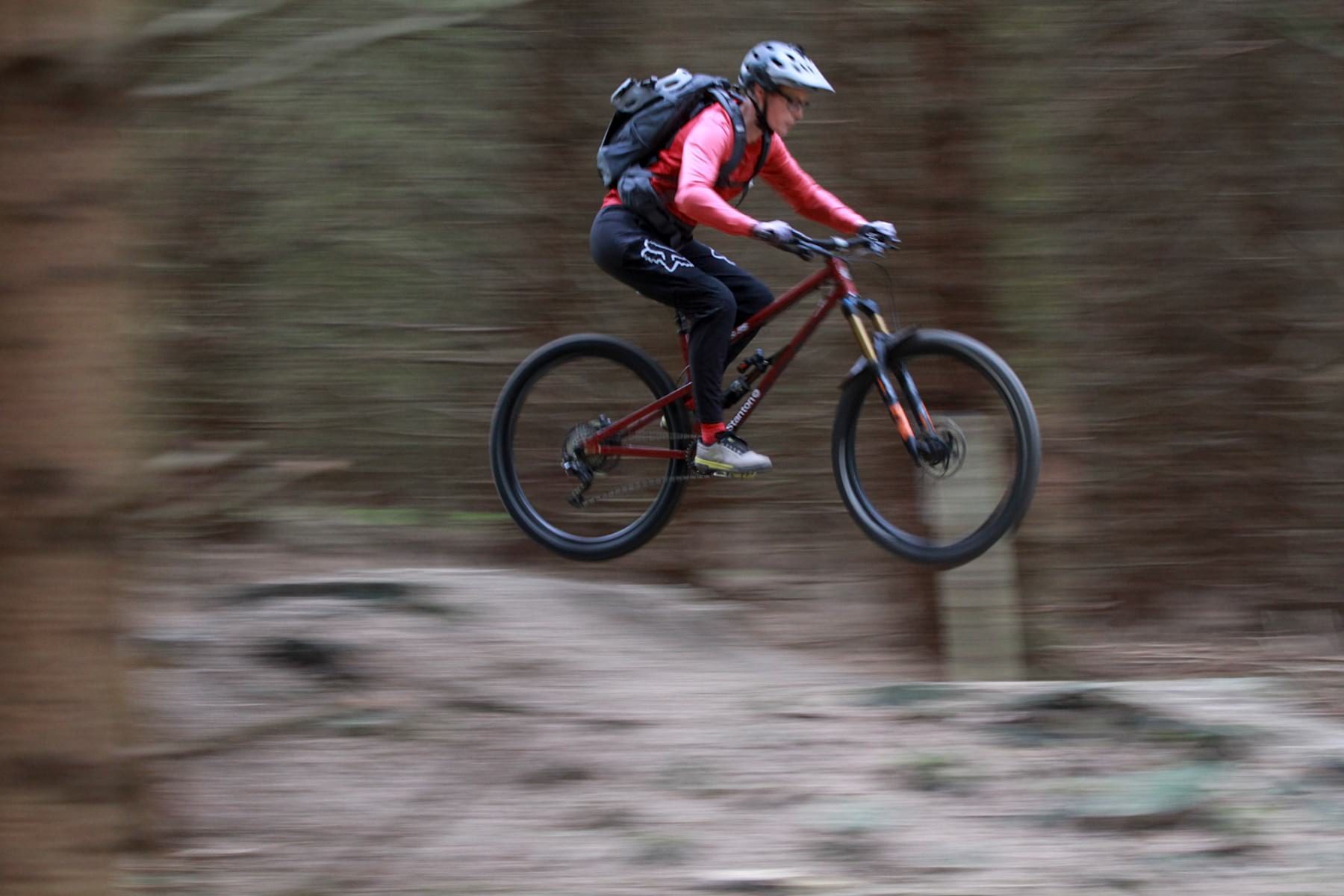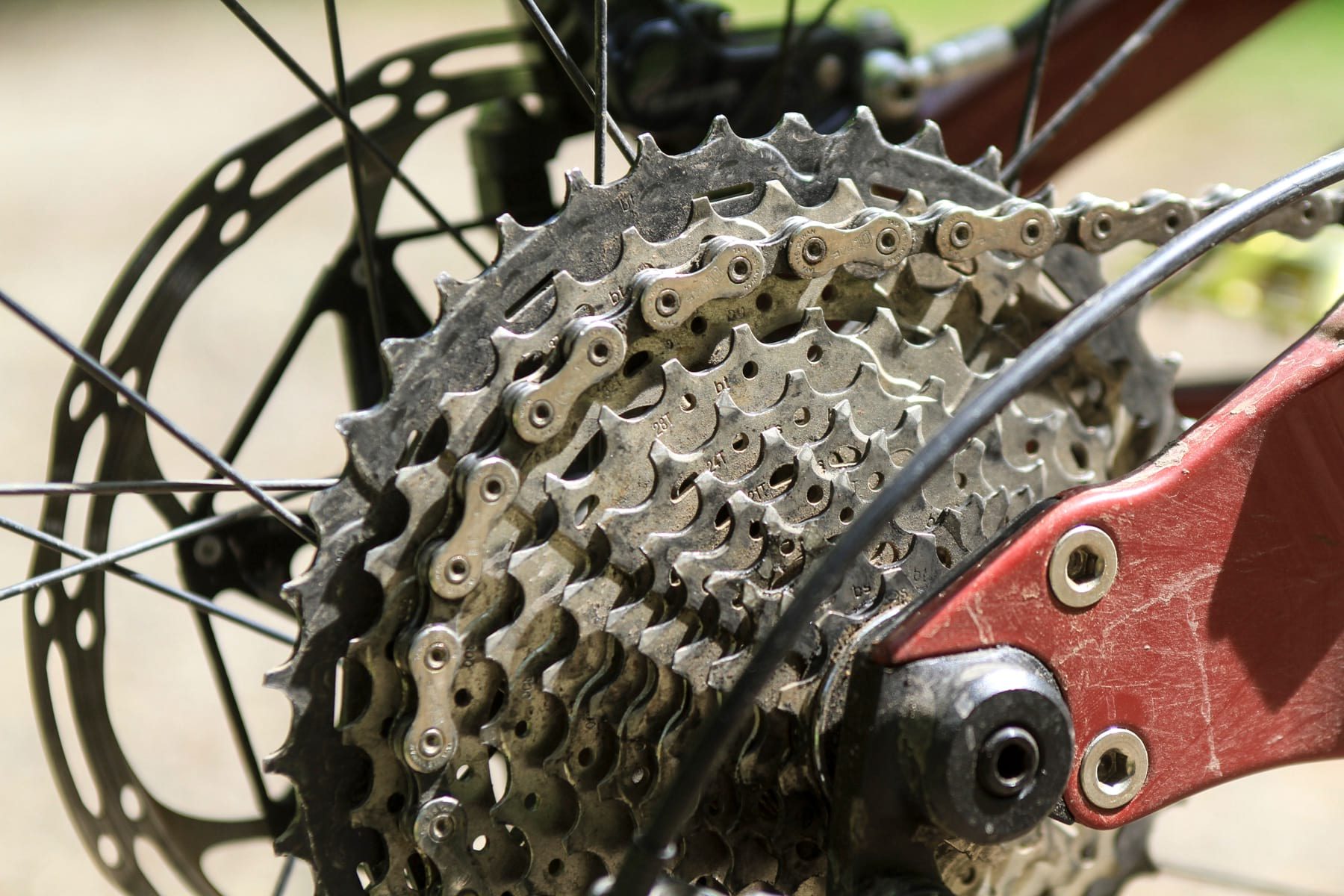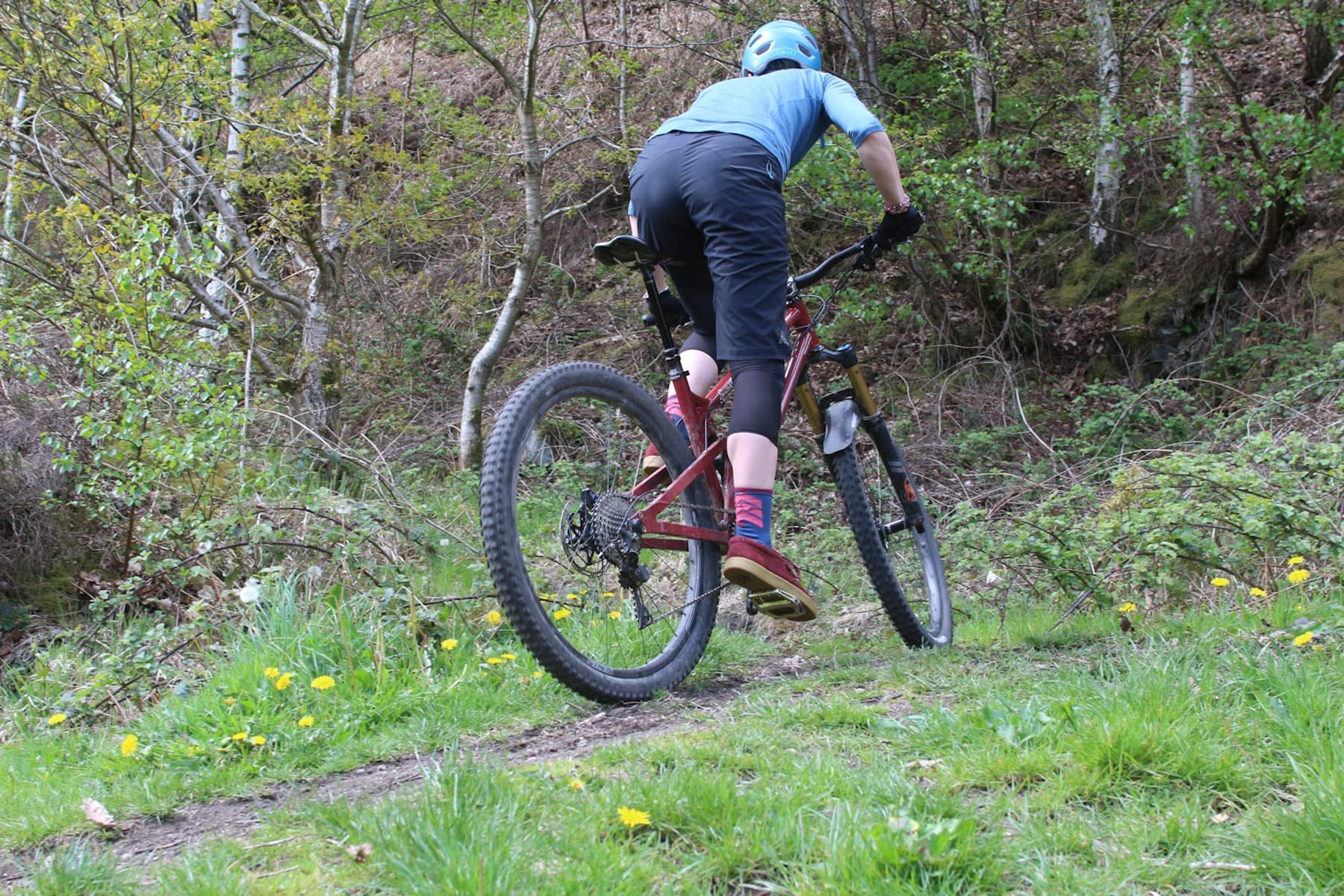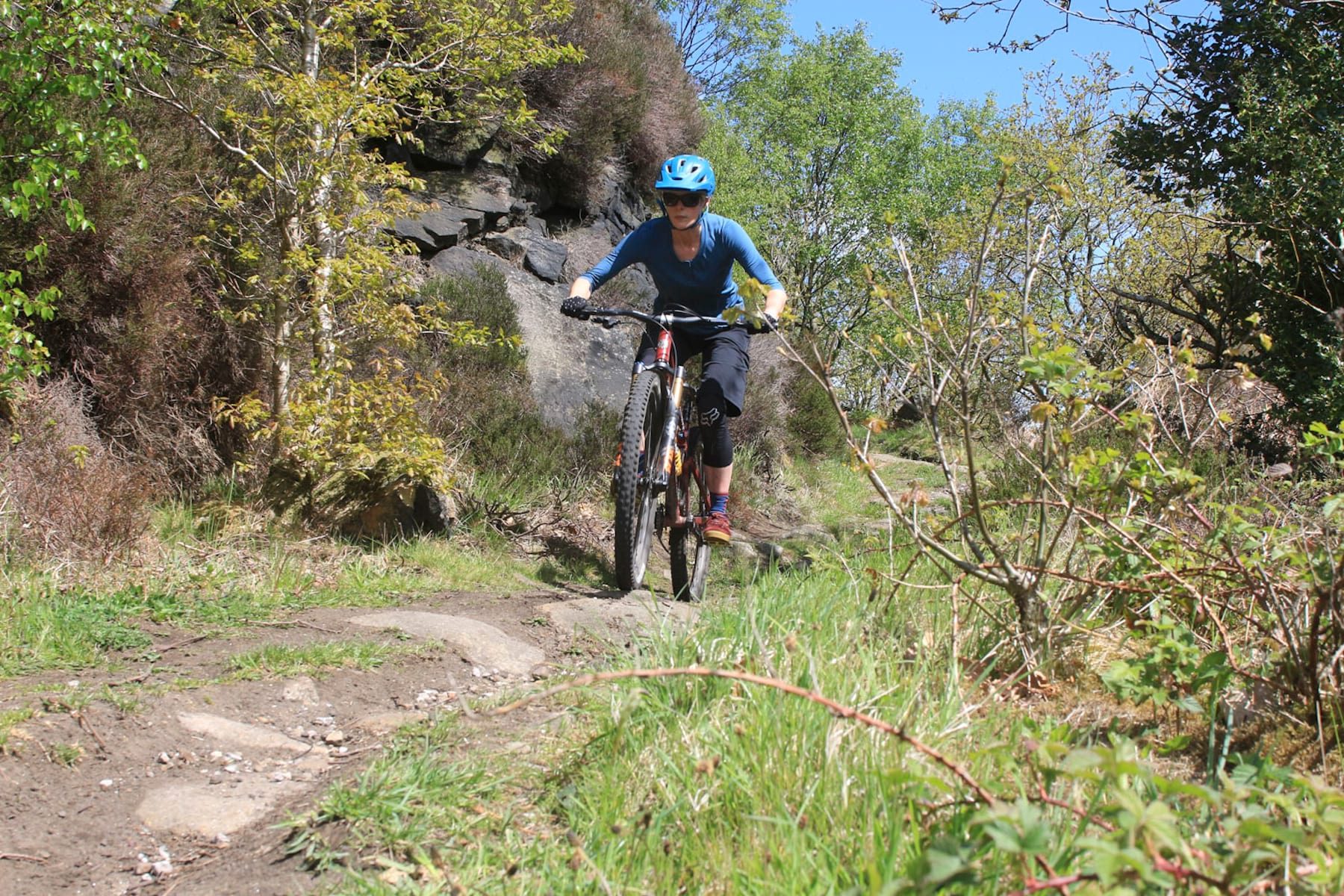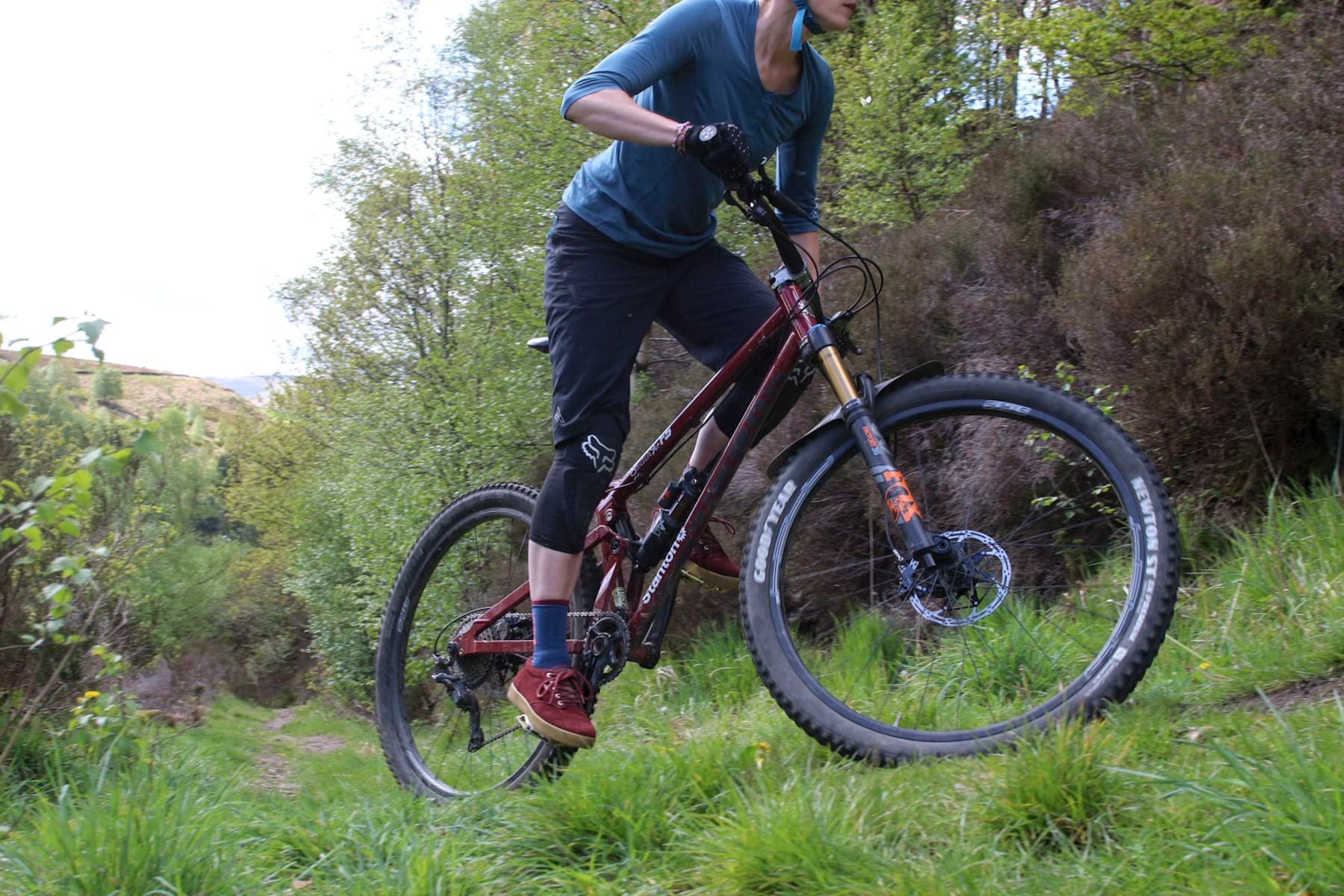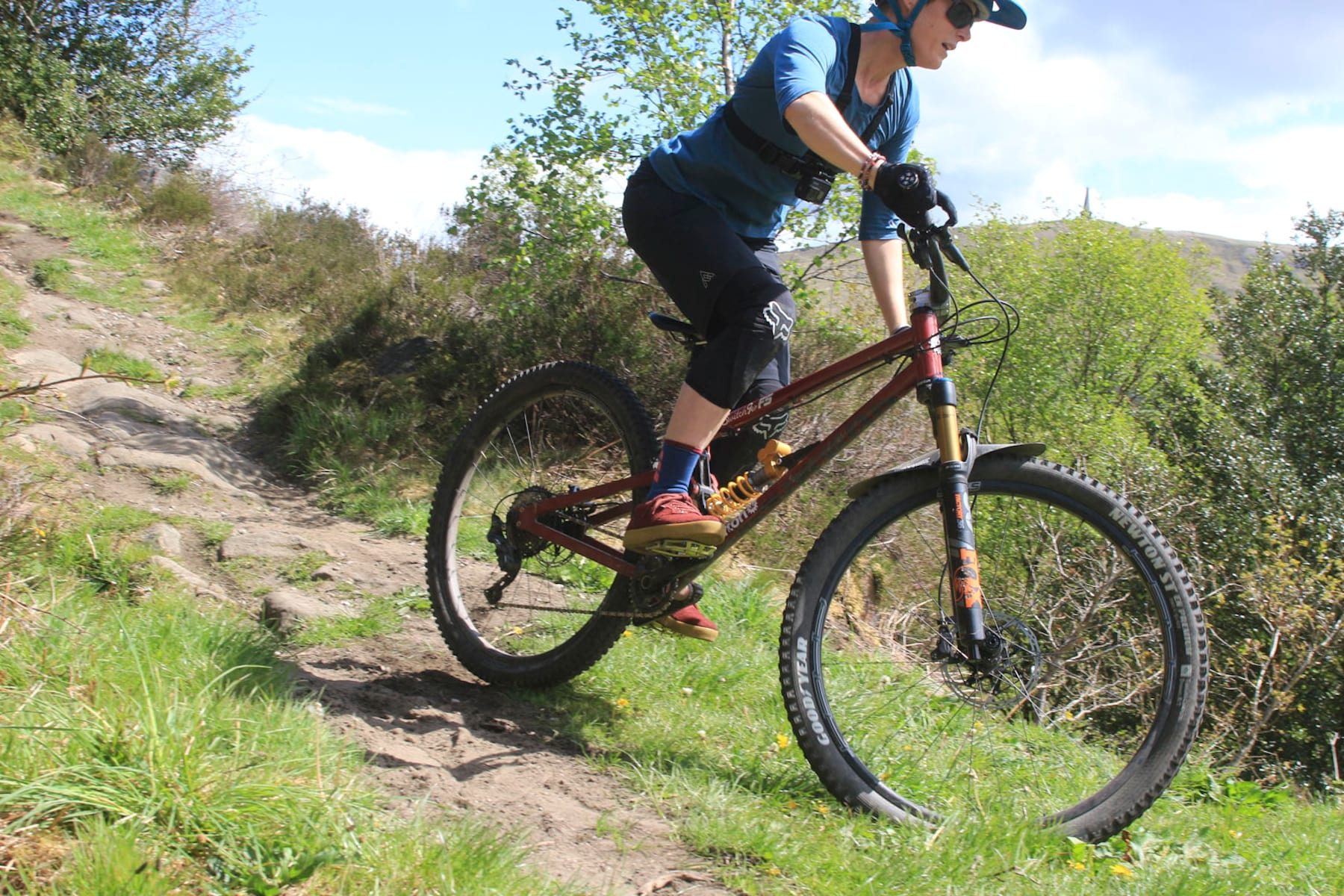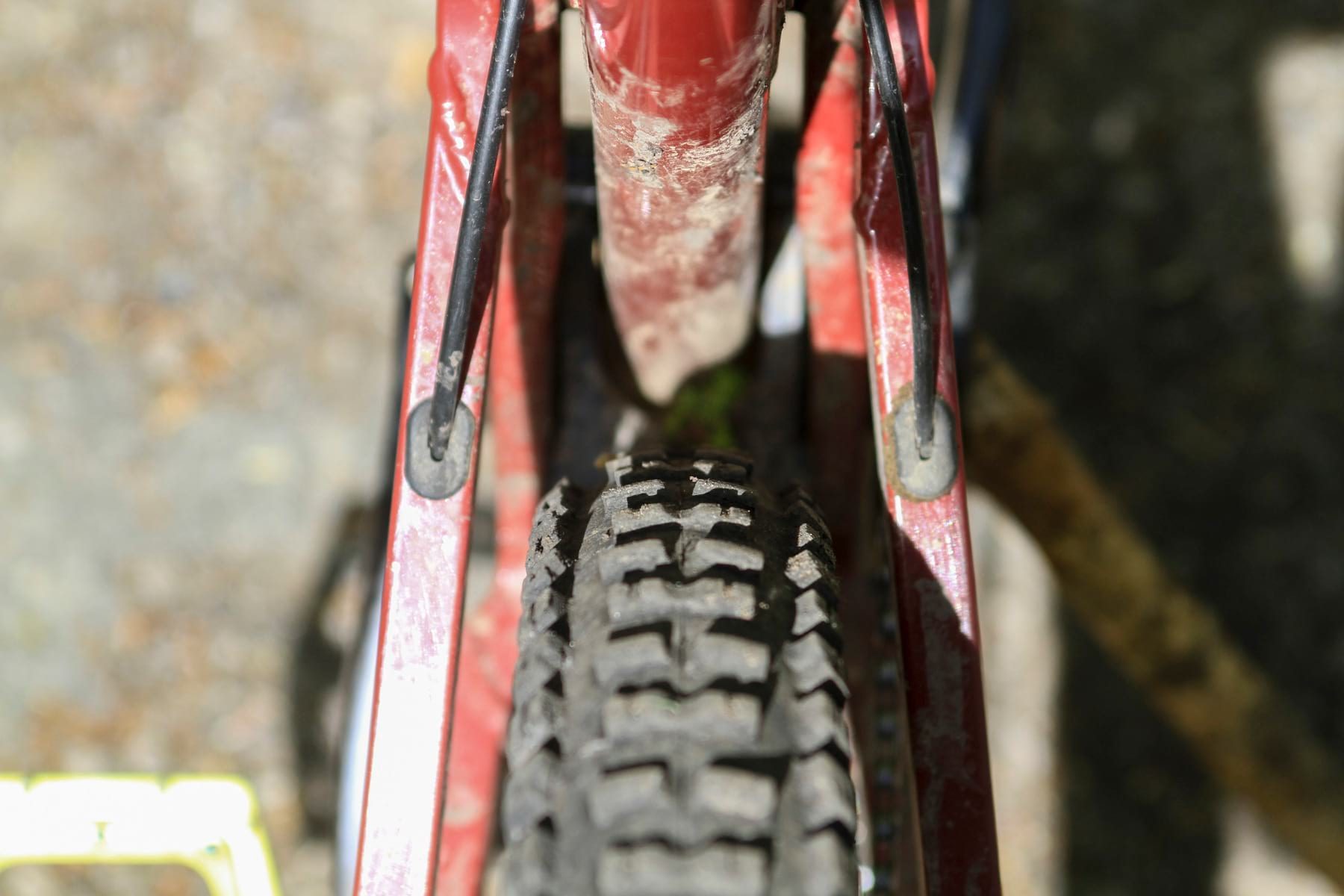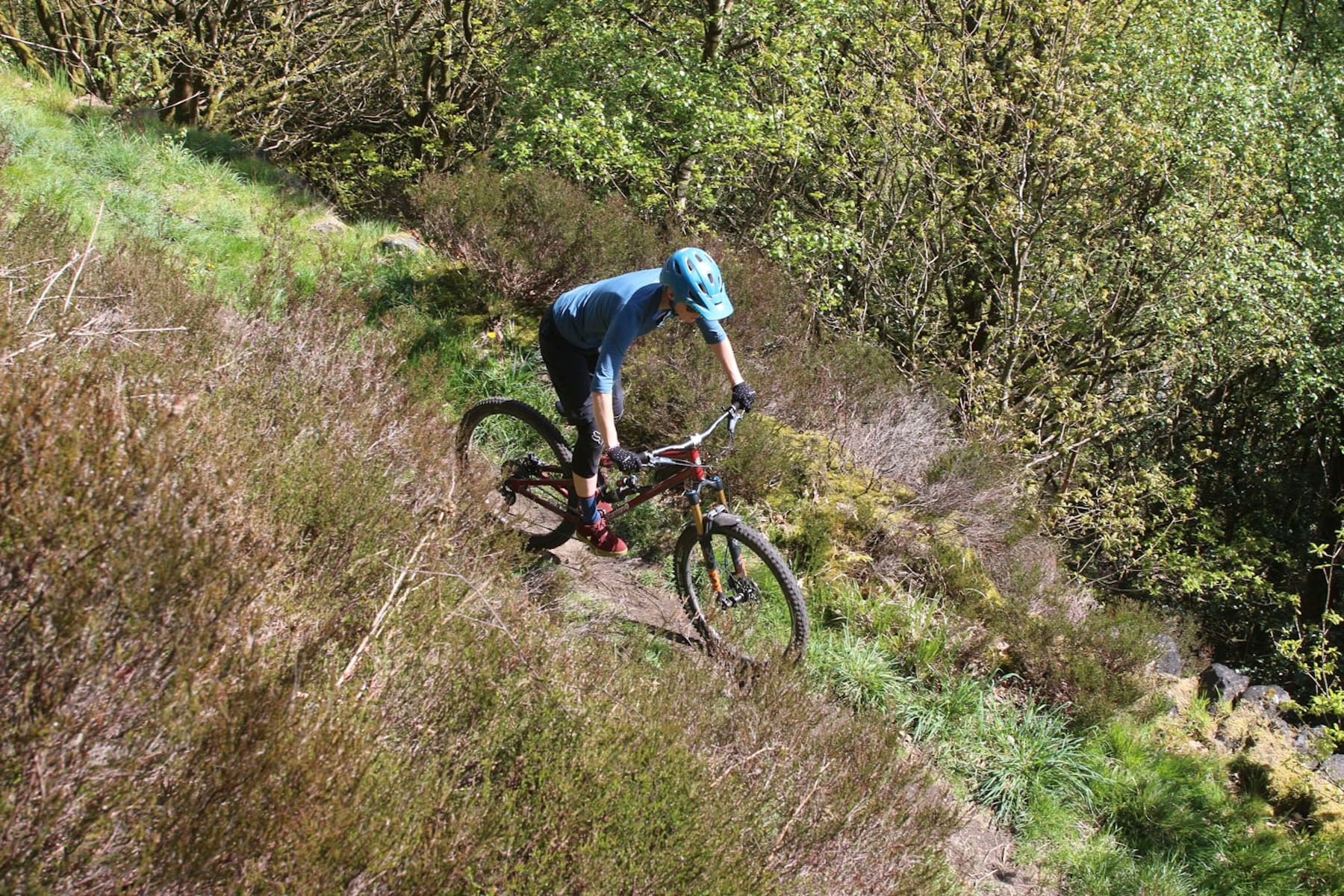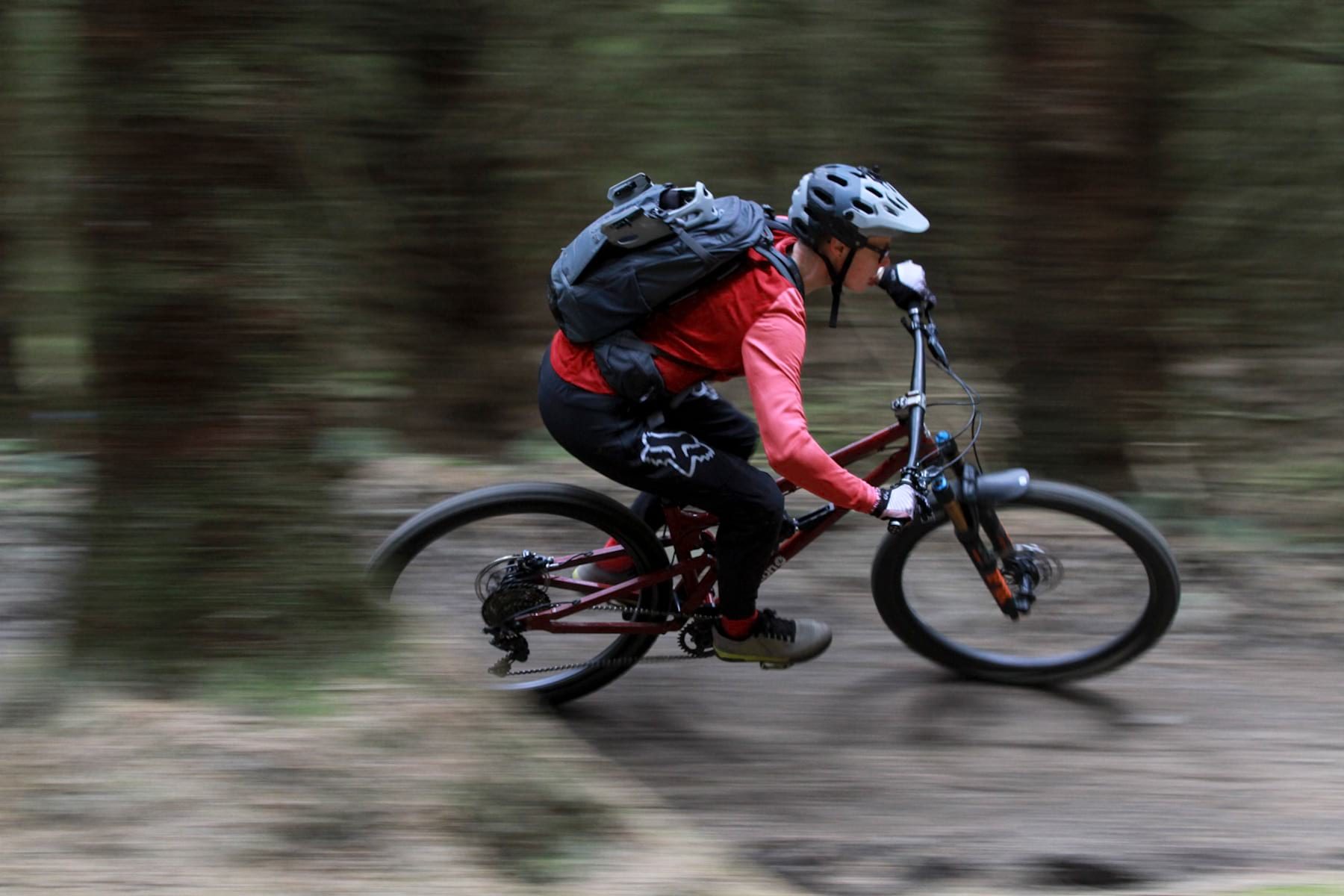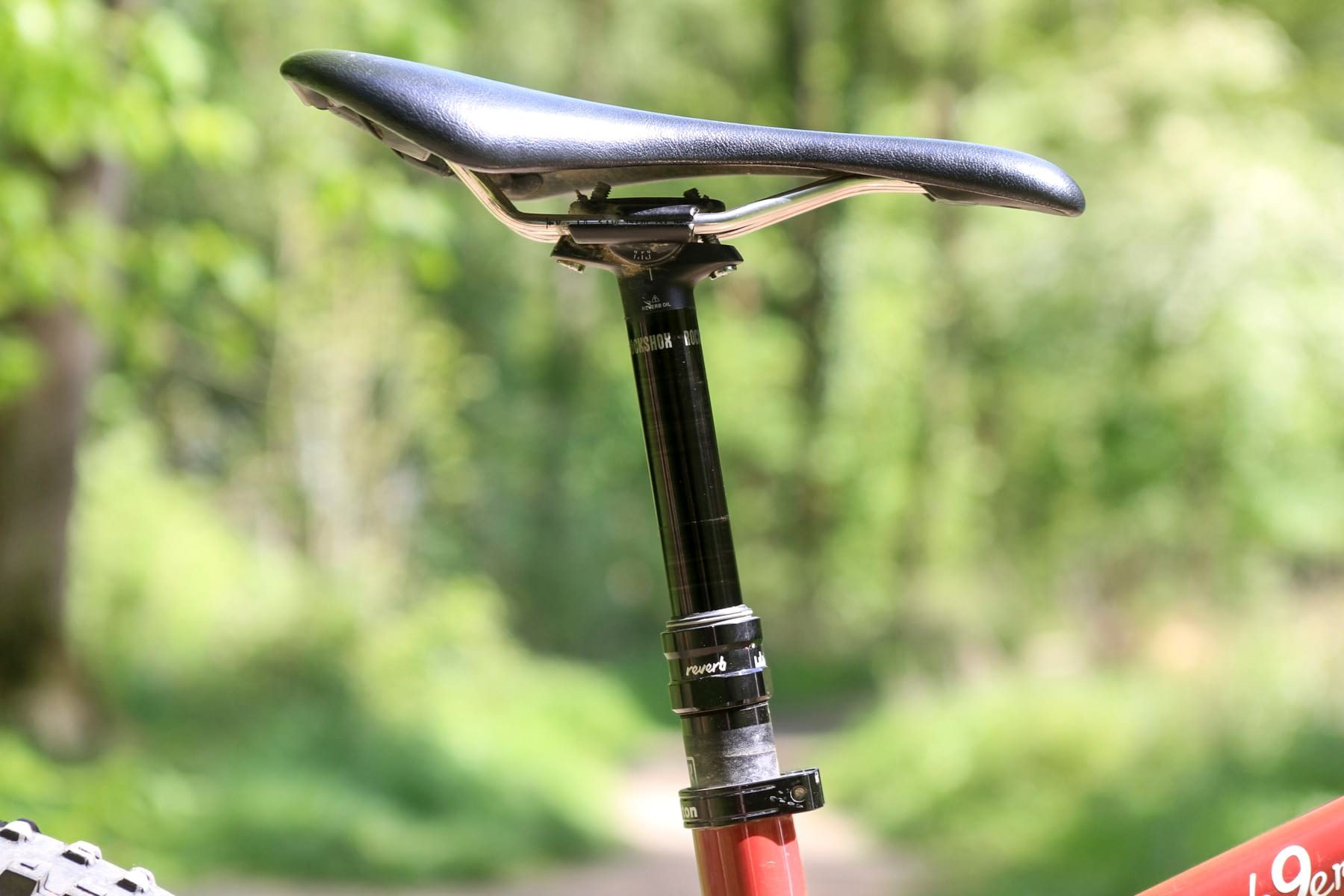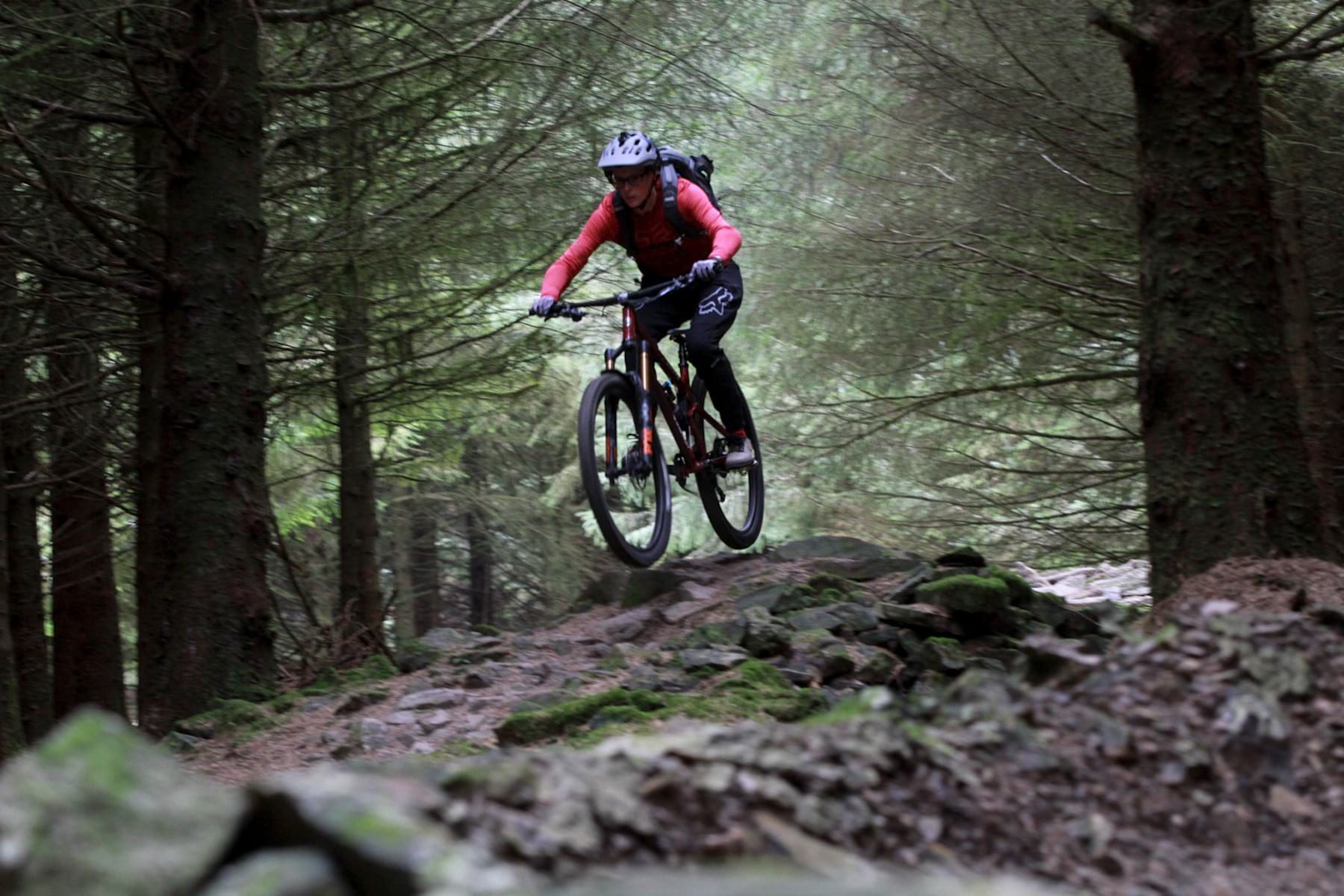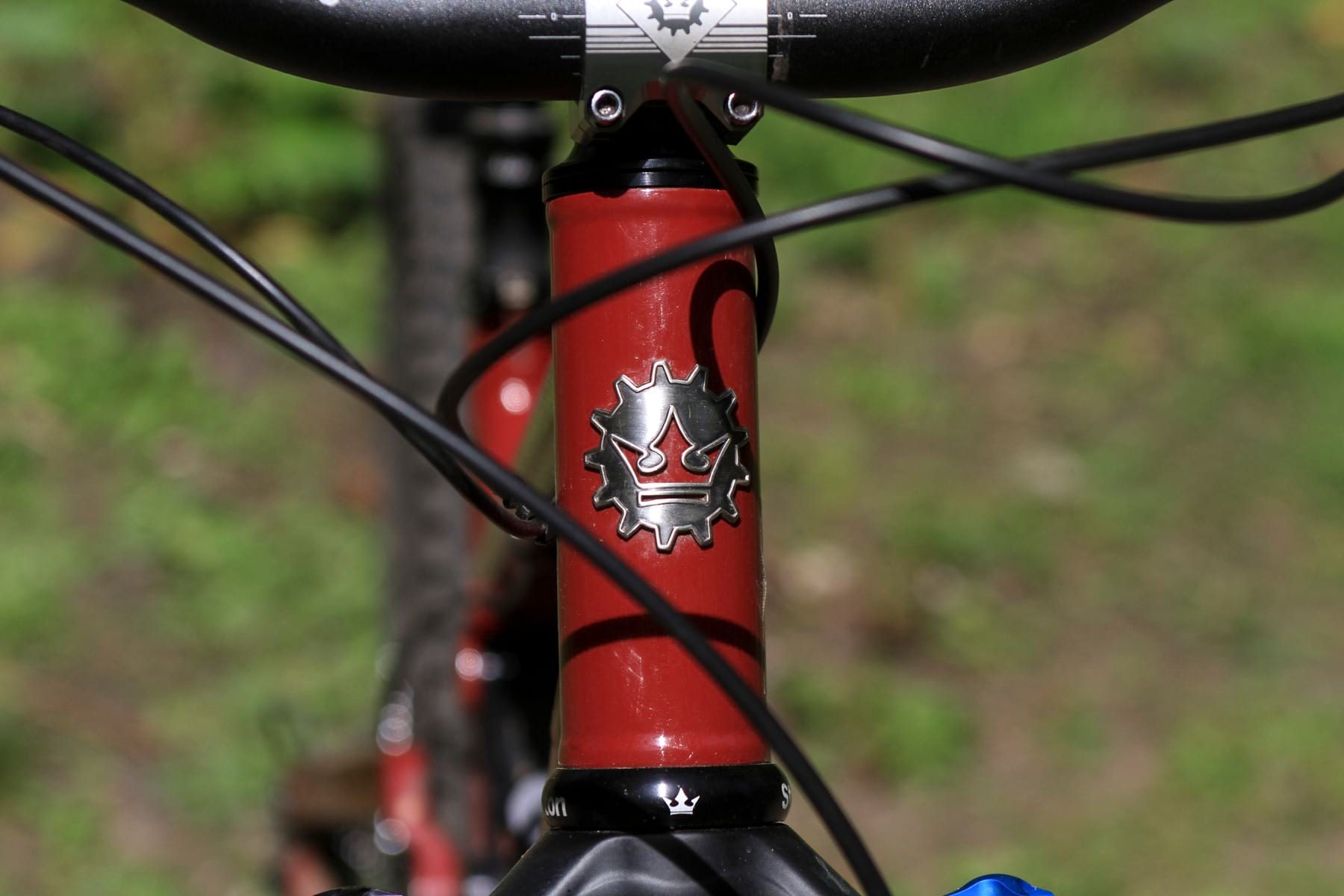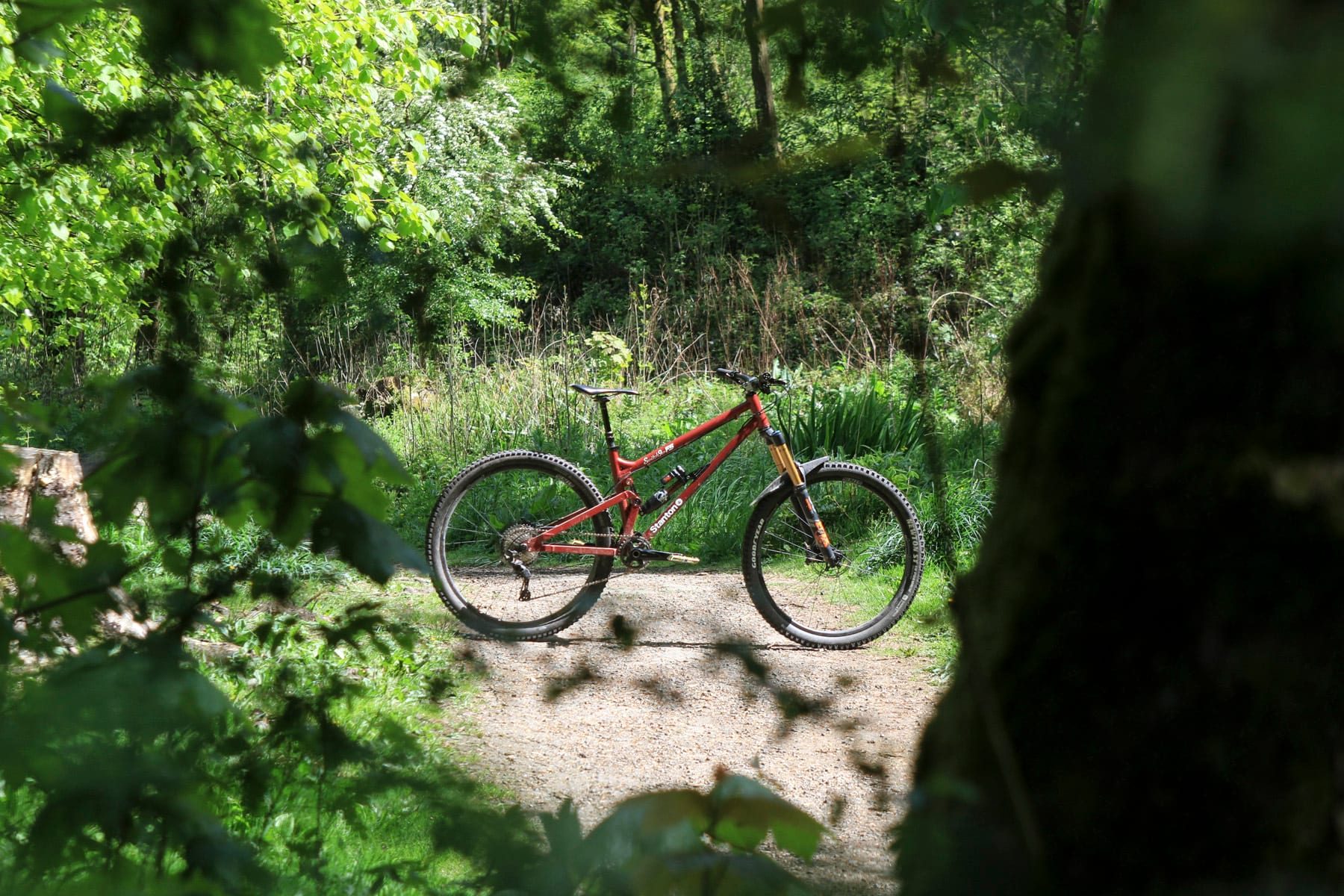Hannah reports back on her time on the Stanton Switch9er FS, a hand made steel and alloy bike from the UK.
Stanton Bikes has a well established reputation for building steel hardtails, so it was with some excitement that the move into full suspension frames was announced, with the prototype Stanton Switch9er FS being revealed at the London Bike Show in February 2018. It took until late autumn last year to be ready for production, and we went to check out how Dan Stanton has structured his business to allow the building of the frames from scratch at the Matlock HQ.
Billed as a bike for enduro racing or aggressive trail riding – ‘a Trail Slayer’, says the website – the Switch9er FS (that we have here) has 140mm of rear travel, 160mm front, 29 inch wheels, and sits alongside its 27.5in wheeled sibling, the Switchback FS. This comes in two guises: a 140mm travel ‘aggressive trail’ bike, and 160mm travel ‘enduro/park’ bike. Both the Switch9er FS and Switchback FS come in at the same price, £3,975 and up for a complete bike, or £2,500 for a frame and shock.
Choose Your Own Adventurer
Because the bikes are made to order, each Stanton Switch9er FS can be adjusted to your geometry and colour needs. You can mix and match the stack, reach and seat tube length. In the interests of keeping things simple, I went for a standard 16.5in geometry bike:
- Stack: 622mm
- Reach: 445mm
- Virtual TT: 600mm
- Actual TT: 610mm
- Seat Tube: 419mm
- Head Angle: 63.73°
- Seat Tube: 76°
In the interests of aesthetics, and because you can, I opted for my own personal colour scheme and a special Singletrack decal. RAL 3004 ‘Purple Red’ for the frame, with RAL 8019 ‘Grey Brown’ for the downtube decals. You can go as wild as you want to (for a small upcharge), or not, and just choose from one of the Standard or Elite colours already chosen by Stanton. There are some really nice options in there.
The bike comes in four basic sizes, 15, 16.5, 18, and 19.5in – but all with that mix and match option across stack, reach and seat tube. The standard geometry falls into the long and slack of modern trends, and if you go for custom options you can make that even longer and slacker – or not.
If you’re looking at this bike, you’re perhaps already sold on the idea of having a British built steel bike. Certainly Stanton seems to have something of a cult following, and their steel hardtails are shipped all over the world, with many customers opting for multiple models, or nice new paint jobs from time to time. Perhaps you’re just interested in whether a steel bike can deliver the same performance as a carbon full-susser, maybe you’re questioning the environmental credentials of plastic bikes, or maybe you just like the shape of a nice metal tube? You’re probably not looking at this bike as a first foray into the world of full suspension – it’s definitely got a degree of boutiqueness to it. But is it all in the ‘steel is real’ myth and aesthetic, or does it perform differently?
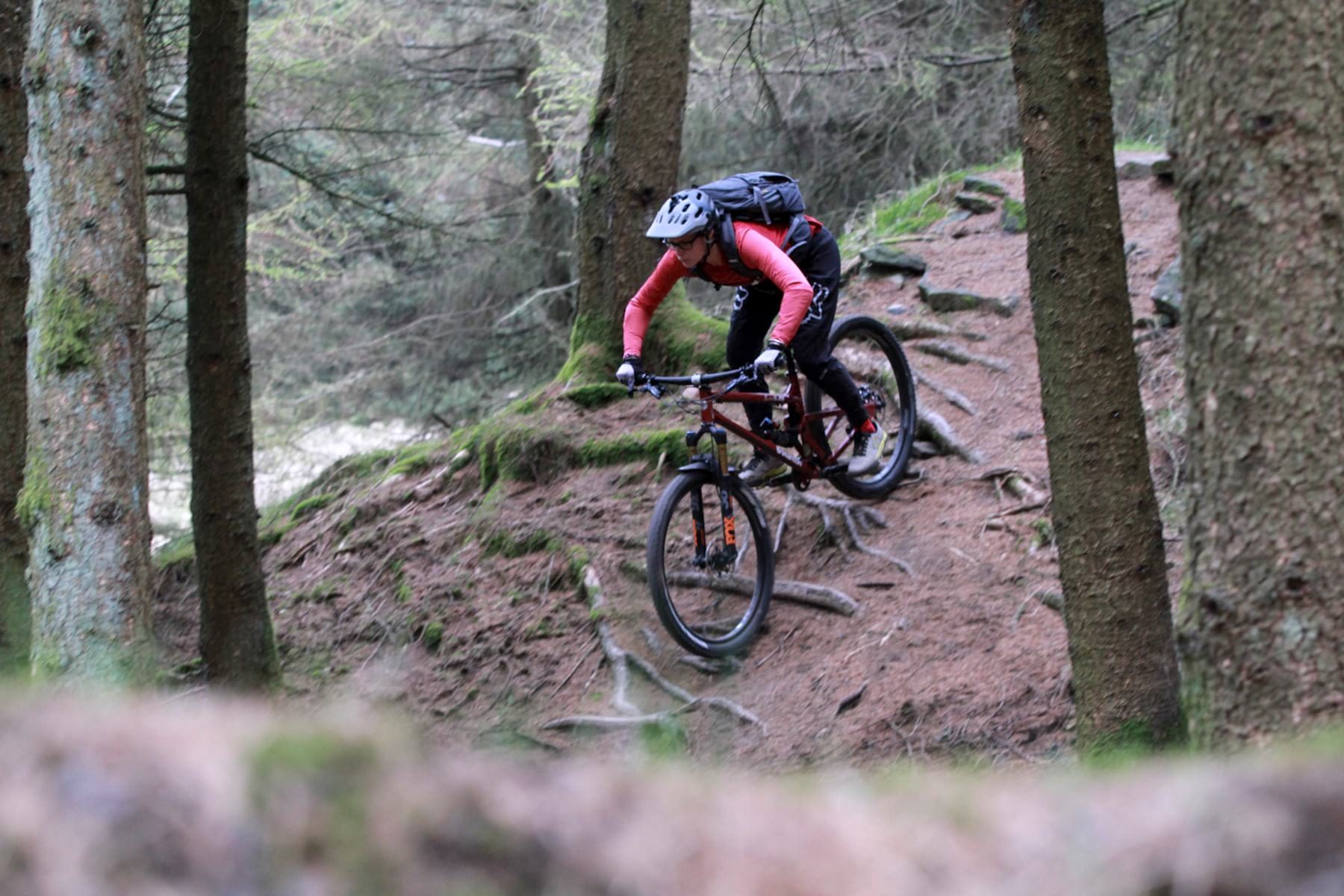
I’ve been riding a few full suspension 29ers over the last year, in a selection of carbon and alloy models. But I confess I am in the ‘ooh, round tubing, let me stroke it’ camp. There’s something about how a steel (or titanium) bike looks that is just…well… a bit hot. This would be my first chance to ride a steel FS bike, and I was looking forward to it. The website promised ‘the most well engineered playful natured, confidence inspiring, aggressive 29er full-suspension frame’. Would it be a case of form meeting function?
The Bike
The Switch9er FS combines a steel front triangle with rear alloy triangle, joined by CNC machined linkages and integrated bottom bracket and first link pivot. It’s all welded together, order by order, on site in Matlock. It’s perhaps testament to the quality of the welds that quite a few customers ask for a ‘raw’ finish to Stanton bikes.
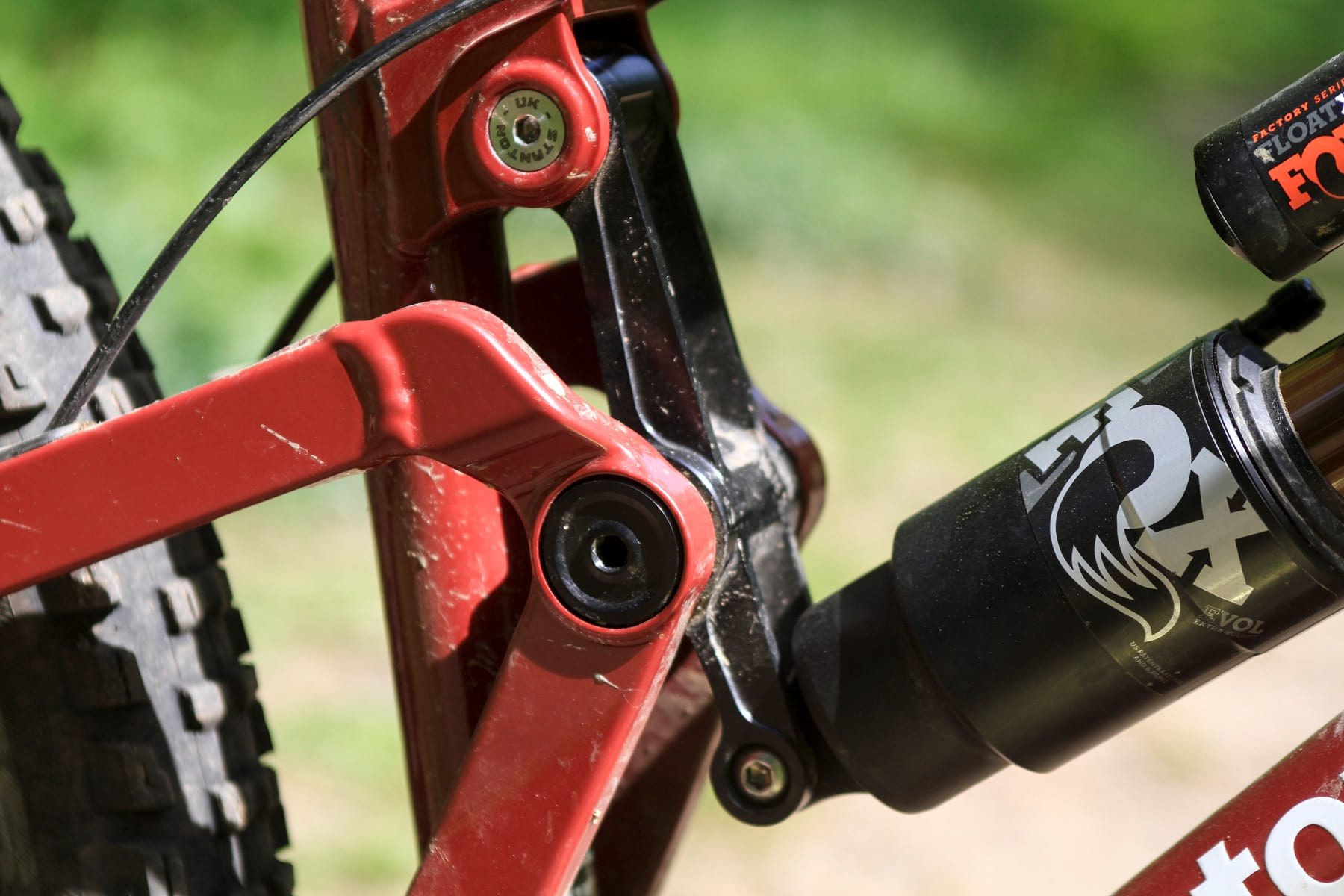
Steel has an inherent flex to it, which is great for some things, but not so good if you want your shock to move in a straight line without stiction, or you want to transfer power through the pedals into movement. Dan has designed this bike to have as little lateral flex as possible in the front triangle and through the linkages, to give direct power transfer. The bottom bracket shell and first link pivot is constructed from a single piece of steel to create that lateral stiffness. Also in the interests of lateral stiffness are the CNCd aluminium linkages, plus the two CNCd ‘dog legs’ that form the front of the rear triangle, around the linkage assembly. In contrast, the back of the rear triangle is made with tubing with wall thicknesses designed specifically to give the flex that you want for cornering.
An interesting point to note is that the left and right halves of the rear triangle are just that – two halves. The drive and non drive sides are separate, linked by bolts, not a welded bridge. So if you happen to smash up your rear triangle, you can replace just the damaged half. It’s like Meccano got rad. That swap and replace option is part of Dan’s design ethos – he wants his bikes to be ‘hop-up-able’, so you can change linkages, shock mounts, and triangles as his designs or your riding evolve.
Once I’d stopped fondling the frame tubing and took a step back, it’s fair to say that it looked quite tall at the front end. It has quite a long head tube and an external headset – so with no spacers up front and a 35mm stem there didn’t seem to be a lot of room for adjustment.
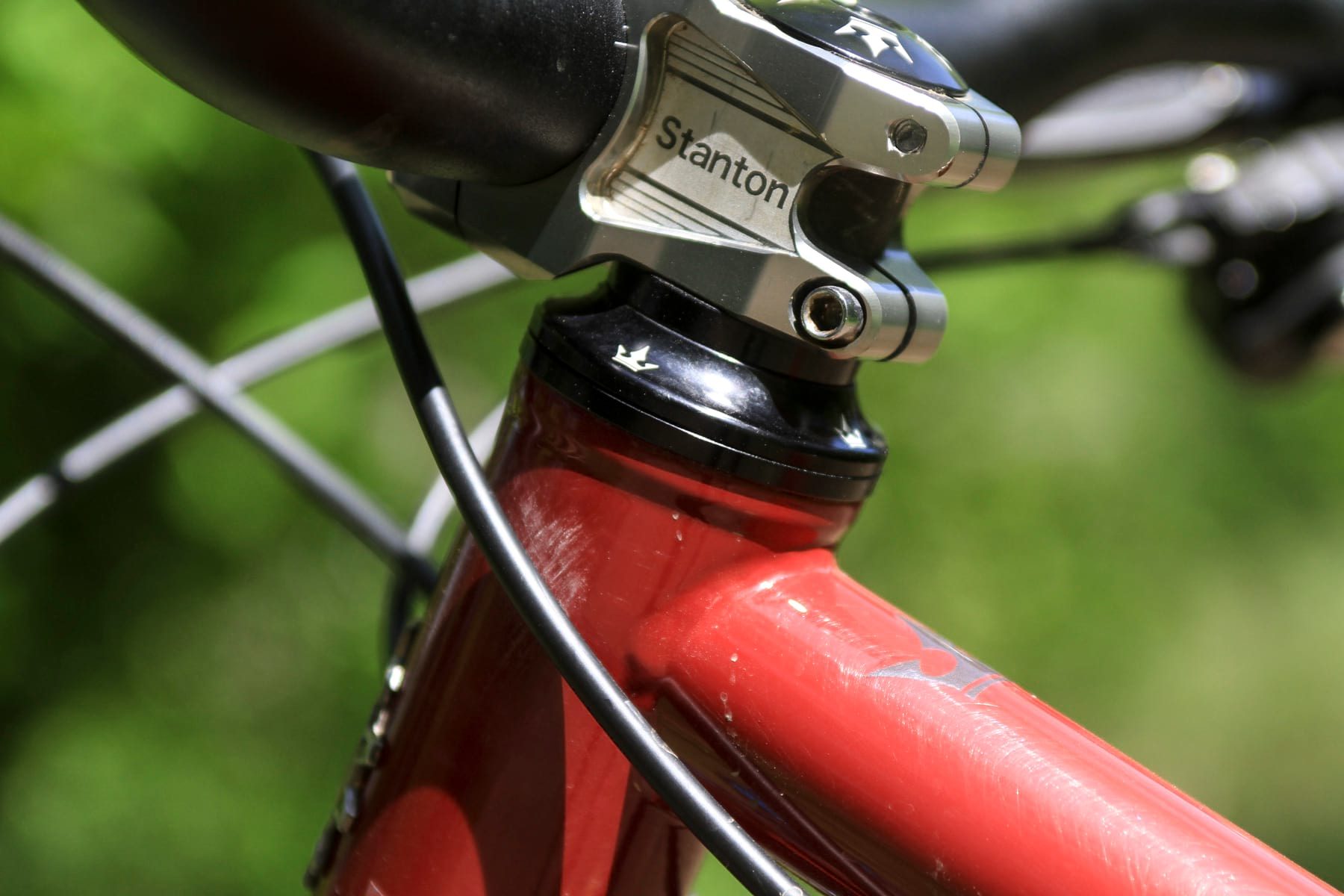
My test bike came with an approximation of the ‘Elite’ build. I say approximation because it was built up mostly with used parts, and one or two of them weren’t quite as the Elite spec would be. I swapped one or two items round during the test too. Plus Dan shipped me both the Fox Air Shock and Ohlins Coil shock, for a bit of a comparison. As if having to decide your geometry and finish wasn’t choice enough. Oh, and you have to choose if you go for internal or external rear triangle routing. I went for internal. Enough decision making – time to ride.
The Ride
I started out with the Fox Factory X2 air shock set at 25% sag and the build all as it came from Stanton. The first ride out on it was actually something of an XC affair, with a mixed bunch of MTBs and rather hardcore gravel riders. I was surprised how easy it was to pedal and keep up with the group – I wasn’t going to be leading them up any climbs, but I wasn’t blowing up and getting dropped either. I did find on the steepest climbs that I’d have liked another gear – coming from a series of SRAM Eagle equipped bikes, I certainly missed that easier gear. In fact, my test bike came with only a 11-42T cassette whereas the true Elite build would come with an 11-46T cassette. Pedalling and pedalling, I was pleased to find the Switch9er didn’t feel like a huge hulk of steel weighing me down.
Finally getting to head downhill, I looked forward to leaving the gravel riders behind, and indeed the bike flew. Somewhat terrifyingly, since the Goodyear Newton tyres it came with were somewhat bald, rather taking the edge off the joy of flying off rocks as I didn’t quite trust that the landings would hold. Especially in the dark. And especially when you’re going so fast your light has bounced around and isn’t really pointing at the trail. My first impressions then? This bike could go, and at those speeds, it could get me into a lot of trouble. I should invest in pads, and a better light bracket.
Further testing on more appropriate rides and trails continued. Trails that go down, around, in and out. While the bike is stiff through the front triangle and suspension movement, the flex in the rear triangle is really noticeable, and this pairing seems to me to translate into great cornering. Not everyone may agree with me here – and perhaps particularly heavier riders (I’m relatively light at 65kg) – but I didn’t have any trouble with tyre rub as a result of this flex. Instead, I found myself consistently making corners which usually I might only get on a 50/50 basis. I’m mostly rubbish at corners. On photoshoots I regularly think I’m leaning the bike over only to find that the camera shows I look like I’m going to the shops. But on the Switch9er I found myself looking for trails with corners, enjoying the whippy sensation of getting into the corner and really stamping the back foot through them. Good heavens, I was approaching ‘roost’ status.
In a straight line, on a straight forward non technical descent – think long grassy fields or moorland double tracks, the kind you can pedal along with the kids or take at warp speed without them – I found that warp speed a little difficult to achieve. It just seemed to take a bit more pedalling to keep my speed up – getting the speed up is no problem, the transfer of power is great, but something seemed to sap speed on these kind of descents. But then as well as being a bit rubbish at corners, I’m also pretty rubbish at the art of using the trail to generate speed, so this may be down to a combination of my riding style and the (not insubstantial) weight of the bike, rather than any of the kinematics. Stick in a bunch of rocks and obstacles, and straight lines were fun, and about to get more so.
Part way through the test, I swapped to the Ohlins coil shock. I confess that while Dan Stanton prefers the feel of the air shock, I am rather partial to the coil. For me, it felt like I was getting all the comfort of the suspension but just more smoothly and with less chatter or kick back in the rear. My rear wheel felt stuck to the ground, but in a good way. It just took the hits and let me keep on rolling in a way I’ve not really felt with an air shock. I ride flat pedals and most of my crashes or confidence loss moments involve a foot losing contact with a pedal in one way or another. With the coil I found I wasn’t getting the same kick back through my feet, and I was happy to try bigger, after and more technical stuff. Shortly after swapping to the coil, a ripped knob forced me to swap out the rear Goodyear Newton for a Bontrager SE5 Team Issue 29×2.30, which helped a lot with the grip situation and gave the rear end even more confidence. Speaking of tyres, I doubt you’ll get anything bigger than a 2.4in tyre in there, and with the flex in the rear end I think pushing the limits would lead to some rubbing of the tyre on the stays.
Getting that rear end so plush and comfortable highlighted the contrast I was experiencing up front however. My arms were getting tired. I think a combination of the stiffness of the front with the position of the bars was the cause. The Race Face Turbine2 bars it came with were very straight, very flat, and very wide. However, with the tall headtube, I found that my stock of swap options from our bin of bars was a little limited. Adding any kind of significant rise was going to make things even taller. In the end I went for a Spank Oozy 780mm bar, and my wrists felt a little more comfortable, though perhaps a touch narrower still might have been good. Swapping the brakes over to the latest SRAM G2 (just because they needed testing, not because there was anything wrong with the stock Shimano ones) didn’t affect my arm fatigue, although the resulting mismatch of SRAM brakes and Shimano gears left a less than perfect arrangement for my thumbs. I played a little with the fork settings, trying a softer set up with a little more sag, and I think with a ShockWiz and more rides I could probably improve things a little more here. The front of the bike is stiff and direct, and this combines with flex in the rear to give great cornering – and repeated exclamations of ‘how did I make that?!’. However, to offset that stiffness up front, for comfort I think you’re going to want to run a really good fork with tuning options, plus perhaps be open to trying out different bars and grips to get your wrists sitting just so.
If I was going to say I got something wrong in my geometry choices, it would be that I should have gone for a shorter stack at the front end. With spacers and riser bars, I could add height, but with the bike I have, I can’t take away. On the steep trails of the Golfie in Scotland’s Tweed Valley, the front end height was a good thing – I never once worried about going over the bars, despite the inclines. If you like your trails steep and twisty, then the Stanton Switch9er FS is brilliant. Wriggle and flick your way down, and be sure to pause for a giggle at the bottom before you head back for another run.
Where I’d have appreciated a more lowered, forward ride position was on less steep and more flow or jumpy stuff – like Make or Break at Innerleithen. Sure, I could bend my elbows more and force my body lower, but that’s something I’m still working on the muscle groups to achieve. A bike with a lower front would put me there automatically, with my arms and core in a more neutral, less conscious position. On balance I think I’d prefer the slight flexibility of cockpit set up that a shorter head tube would offer me (at my height and proportions, anyway). And that, surely, is part of the attraction of buying a Switch9er – you can pick and choose these tweaks.
On the whole, I like to ride slow and deliberate technical terrain. I’m not a groomed trail centre speed demon. On the Switch9er FS I successfully cleared some pretty significantly difficult local trail sections that had previously defeated me, and I had the confidence on it to take on a solo trip to the Golfie – my first time riding in the Tweed Valley. Finding that I could handle the technicality of the trails, I found myself pushing to see what speeds I could do. I’m not going to pretend I’ve found the limits of this bike, just the limits of my nerve, but I have got a whole lot better at enjoying fast cornering and tight switchbacks.
Durability Notes
I was a little sad to find that the finish on the top tube went quite dull after just a couple of wet rides. My colleagues assure me this is common with powder coated steel frames, but still, I was a little sad.
Since the parts were largely used when they came to me, and then I swapped some round, there’s little point in commenting on the build components. The tyres in particular were worn when they came to me – I suspect some enthusiastic skidding may have occurred, and if all Stantons ride like this I can see how such behaviour might come about. But, it’s the first time I’ve ripped off a knob – worn tyres, riding a little harder, or a mix of the two, I wonder?
The Reverb dropper proved to be so annoyingly squishy that it prompted me to do this video showing a quick trailside hack for squish removal.
All of the Stanton branded items in the build proved durable and comfortable. Unusually for me, I didn’t even swap out the saddle.
Three Things That Could Be Improved
I’m not going to pick the usual ‘three things’ for improvement, because with a bike where you can choose your own geometry, your own colour, and your own build kit, that seems a little pointless. I would however say that the ‘standard’ geometry option is quite tall at the front, and you should consider whether something lower might give you more set up flexibility – depending on your height and proportions of course.
Three Things We Loved
1) Pick and mix EVERYTHING! With so much choice, you can really feel like you’ve got your own personal bike. Stand out or blend in, it’s up to you.
2) The flexy rear end. I loved how this worked with the stiff front on corners. Not everyone I know agrees with me, but it suited the way I like to ride.
3) It’s pretty. It is. Look at it! Stroke it! See, doesn’t that just make you want to ride it?
Overall
Yes, for the price there are other bikes out there that are lighter, or come with more bling components. But if you’re buying a Stanton I think you’re likely buying it for the complete package – it’s not just about the performance, or the weight, or what’s hanging off the frame. It’s also about the fact you’re buying steel, not carbon. You’re buying from a person as much as you’re buying from a company. And the person in charge of the company has a vision that involves your bike evolving with you rather than being swapped out at the next model year. Sure, you still want your bike to perform, and the Switch9er FS does – but what you’re buying into is more than a pair of wheels and a frame.
This is a bike that makes me want to go and play in the woods. It makes me want to do illegal things involving spades and berms. Riding it makes me feel like I might almost look like Vero Sandler as she flicks her way smoothly down a newly cut track. I don’t really look like her, I know, but it makes me feel like I’m having that kind of fun.
Performance is important, and this bike certainly has that, especially on steep and twisty trails. To me, it certainly lived up to the billing of being confidence inspiring, capable and playful. I think this might be the first time I’ve really felt a bike is playful in the sense it makes me want to play and get a bit silly. And there’s a lot to be said for a bike that just makes you want to ride it. If you want something a bit different, made in the UK, built from steel and alloy and perhaps finished to your specific desires, then the Switch9er FS delivers all that. If that doesn’t make you want to ride it, you should probably take up golf.
Stanton Switch9er FS, As Tested
- Frame // Steel front, aluminium rear, 140mm travel
- Fork // Fox Factory 36, 160mm travel
- Shock // Fox Factory X2 and Ohlins TTX Coil Shock
- Wheels // Stans Arch CB7 Carbon
- Tyres // Goodyear Newton ST 29×2.4in
- Cranks // Shimano XT 32T narrow, wide chainring
- Rear mech // Shimano XT 11-spd
- Shifter // Shimano XT 11-spd
- Cassette // Shimano 11-42T
- Brakes // Shimano XT
- Stem // Stanton Super Series
- Bar // Race Face Turbine2
- Grips // Stanton Super Series Lock-on
- Seatpost // RockShox Reverb Dropper, 170mm
- Saddle // Stanton Rigel
- Size Tested // 16.5in
- Sizes Available // 15, 16.5 18, 19in and custom options
- Weight // 15.44kg / 34lbs (with Fox Shock)
- RRP // £5,500. Frame only £2500 including coil or air shock.
Review Info
| Brand: | Stanton |
| Product: | Switch9er FS |
| From: | stantonbikes.com |
| Price: | £5,500 |
| Tested: | by Hannah for 3 months |
